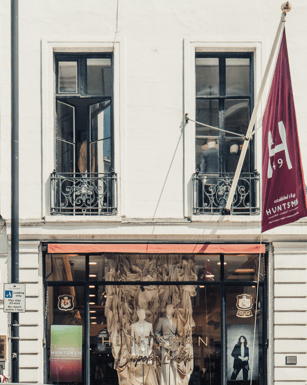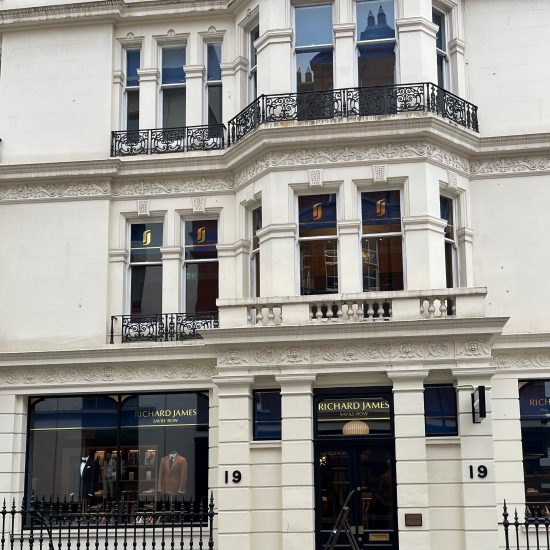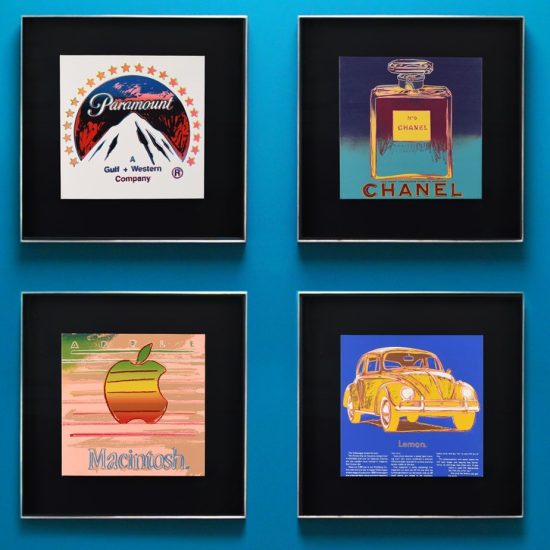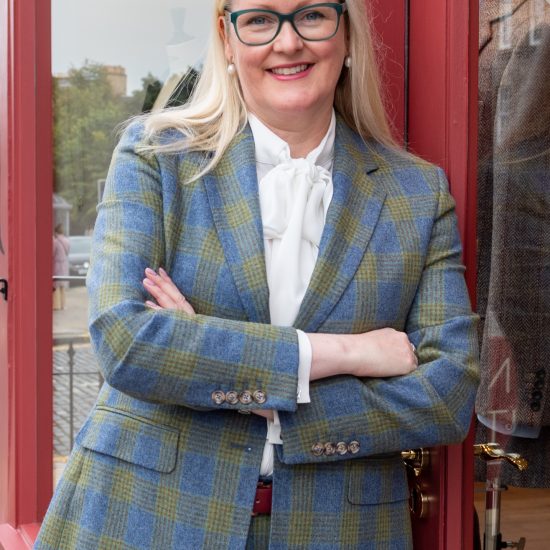
Tommy Nutter, the tailor who ripped up the rules of Savile Row, is remembered in a new biography. Tom Corby reports
Just over a quarter of a century after his untimely death from Aids, the avant-garde Tommy Nutter, like so many creatives of his generation, is still regarded as a legend, remembered as the tailor who single-handedly reconciled the traditions of Savile Row with the male peacock revolution of 1960s swinging London. His contribution to some of the most iconic styles and pop imagery of the 20th century has become part of the history of his trade as he wore down the division between tailoring and fashion. Friends say that a statue ought to be put up of him, like that of Beau Brummel, the archetypal dandy who, in the 18th century, set the bespoke style for generations.
Tommy spent his formative years in Edgware, north London, where his father owned a café, catering, in the main, to customers like truck drivers, gas fitters and builders. He was destined to be a plumber but, over the years, emerged as a blue collar boy made good in the class crucible of the 60s; a time when the alchemy of taste, cool, and sheer force of personality could transform lives in ways that would have seemed impossible in years gone by. Tommy, a 6ft 2 inches tall young man with matinee idol looks, arrived right on cue. It all started when, aged 19, he broke free from plumbing to study tailoring at the Tailor and Cutter Academy. He then landed an apprenticeship with Donaldson, Williamson and Ward, traditional Savile Row tailors, with premises in Burlington Arcade. There, he absorbed the lore and the rules of the English gentlemen’s classic wardrobe. His seven years with the firm gave him a thorough knowledge of his craft, and a lifelong respect for its hierarchy.
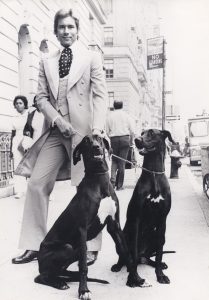 In 1969, Tommy founded his own business, joining up with Edward Sexton, a young cutter with brilliant technical skills. They were financially backed by Tommy’s close friend, the singer Cilla Black, her husband Bobby Willis and others prepared to take a risk. The venture was an immediate success although a writer in the Daily Mirror snarked: “Thomas Nutter is opening what he calls a ‘thoroughly square’ tailoring shop … in Savile Row next week. Well that will make a change. I mean there can’t be more than a dozen there now. Mr Nutter, who is 26, is weary of ‘all those Carnaby Street gimmicks’, and thinks that clothes, like hair, are settling down to something more sober … What, then, of rumours that Ringo Starr has ordered a pair of scarlet PVC trousers from Nutters?” Tommy replied curtly: “They’ll be very square scarlet PVC trousers.”
In 1969, Tommy founded his own business, joining up with Edward Sexton, a young cutter with brilliant technical skills. They were financially backed by Tommy’s close friend, the singer Cilla Black, her husband Bobby Willis and others prepared to take a risk. The venture was an immediate success although a writer in the Daily Mirror snarked: “Thomas Nutter is opening what he calls a ‘thoroughly square’ tailoring shop … in Savile Row next week. Well that will make a change. I mean there can’t be more than a dozen there now. Mr Nutter, who is 26, is weary of ‘all those Carnaby Street gimmicks’, and thinks that clothes, like hair, are settling down to something more sober … What, then, of rumours that Ringo Starr has ordered a pair of scarlet PVC trousers from Nutters?” Tommy replied curtly: “They’ll be very square scarlet PVC trousers.”
Savile Row, with its collection of Royal Warrants, had never seen anything like it when Nutters opened at No. 35a, the story of which has been brought back to life by Lance Richardson in his biography House of Nutter – The Rebel Tailor of Savile Row. A year on, the Daily Mail was declaring it “a whizz bang success – the place for men’s clothes”, putting the charismatic Tommy in the class of actor Terence Stamp, photographer Brian Duffy, and hair dresser Vidal Sassoon, all the stylish young Londoners who had shot themselves into the new aristocracy. Clients came in from the hipper haunts of those named in Debrett’s, from the media, pop stars and even aspiring teenage dandies from the East End, whose ambition was to own a Nutter suit, drawn to Tommy not only because of his matchless sense of style, but also because of his personality. He welcomed them all.
Like Hardy Amies, a Savile Row dandy who dressed The Queen, Tommy produced lively, contemporary tailoring, but with roots deeply embedded in the craftsmanship of Savile Row. Amies named Tommy as “the most exciting tailor on Savile Row in decades.” For three decades, Tommy kitted out the biggest stars on both sides of the Atlantic. He was proud of the fact that, for the cover of the Beatles’ Abbey Road album, three of them wore Tommy Nutter bespoke. George Harrison chose
denim. Other leading dandies of the period were also his clients, including Sir Roy Strong, then director of the National Portrait Gallery, Mick Jagger and Elton John. Andrew Lloyd Webber was also a client as well as a friend. He has recalled: “There was a wonderful maroon coat I wore for Ascot – he was always such fun, very much part of my early life when Jesus Christ Superstar was going on – Tommy made clothes for Tim Rice too – we were all great mates.”
Mick Jagger sported an eau-de-nil three-piece for his wedding to Bianca Perez-Mora Macias in 1971. He was in another Nutter creation days later on his honeymoon in Venice, fitted so snugly that it left no doubt as to which side he dressed. Celebrity nuptials became something of a thing for Tommy. John Lennon wore cream corduroy for his wedding to Yoko Ono on Gibraltar. For Elton John’s marriage in 1984 Tommy made 20 suits, “two of each, in case of mishap”, as he later recalled, “in a wide range of primary colours, including orange and very bright yellow. With each outfit went the appropriate straw boater.”
John Reid, Elton John’s manager, has said: “It was quite an event going to Nutters. You’d write the whole day off. Maybe you’d have lunch and a couple of bottles of champagne.” Tommy has said that when things became “edgy” with Elton he would send out for a bottle of sherry “to smooth things along”. For Elton’s 36th birthday, Tommy made a suit overlaid with 1,009,444 bugle beads, each one painstakingly attached by hand. Tommy also applied his craft to dressing female icons of swinging London, like the red velvet suit for Twiggy which became a celebrated and much copied look when she was photographed wearing it in the early 70s.
People were attracted to Tommy not only because of his ineffable sense of style, but because of his ironic personality. He was a humorist with a wide and interesting circle of friends who were attracted by his enthusiasm, his gentle self-mocking personality and his acerbic comments on the vagaries of others, always ending with the expression, “But who am I to talk?” He was a witty correspondent and his letters to his friends are treasured. In addition, he delighted in writing to the serious newspapers on topics as far ranging as the correct buttoning of the suit on a statue of John F Kennedy, to the scarcity of deckchairs in London’s Green Park.
Tommy died of Aids in August 1992, aged 49. “The saddest thing of all,” he once wrote, “is an in-between look.” No-one could ever have accused him of that. At his memorial service in St George’s, Hanover Square, just up the road from Savile Row, Cilla Black read an abridged excerpt from Chaucer’s Canterbury Tales, relating the story of “A true, a perfect gentle Knight … In dying in his excellence and flower, when he is certain of his high good name; for then he gives to friend, and self, no shame.”
The final words should go to Nutters loyalist Elton John who said: “Tommy completely glamorised Savile Row and made it accessible.” There’s no arguing with that…
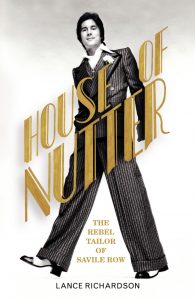
House of Nutter: The Rebel Tailor of Savile Row by Lance Richardson, published by Chatto & Windus. £25



